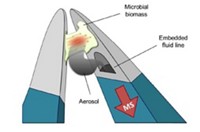Advertisement
Grab your lab coat. Let's get started
Welcome!
Welcome!
Create an account below to get 6 C&EN articles per month, receive newsletters and more - all free.
It seems this is your first time logging in online. Please enter the following information to continue.
As an ACS member you automatically get access to this site. All we need is few more details to create your reading experience.
Not you? Sign in with a different account.
Not you? Sign in with a different account.
ERROR 1
ERROR 1
ERROR 2
ERROR 2
ERROR 2
ERROR 2
ERROR 2
Password and Confirm password must match.
If you have an ACS member number, please enter it here so we can link this account to your membership. (optional)
ERROR 2
ACS values your privacy. By submitting your information, you are gaining access to C&EN and subscribing to our weekly newsletter. We use the information you provide to make your reading experience better, and we will never sell your data to third party members.
Biological Chemistry
Biomarkers Distinguish Microbial Friend From Foe
Food Science: Protein expression patterns could help researchers identify probiotic bacteria
by Erika Gebel
November 7, 2011

Health-promoting microbes that live in the gut must put up with bile, a soapy digestive fluid that can break down bacterial membranes. Now researchers have identified a cluster of bacterial proteins linked to bile tolerance, which could help scientists find new probiotic strains (J. Proteome Res., DOI: 10.1021/pr200828t).
Saïd Ennahar of the University of Strasbourg tested six strains of Lactobacillus casei against bile. “There are many strains from this species that are on the market as probiotics,” he says, but not all of them can survive in our guts long enough to improve our health. All six strains grew more slowly in the presence of bile salts, Ennahar and his team found.
The researchers extracted proteins from the six strains and then used two-dimensional electrophoresis to separate them based on charge and size. By comparing the protein expression levels in bile-sensitive strains to those in bile-tolerant strains, which grew more quickly, the scientists found 12 proteins likely to help the bugs survive the digestive juices. Next the scientists used mass spectrometry to identify the proteins based on their sequences. One of the proteins, RmlC, helps produce the sugars that coat bacterial cells, a line of protection against environmental stressors.
The goal, says Ennahar, is to identify a set of biomarkers that define probiotic strains, including those for not only bile tolerance, but also several other traits, such as acid resistance. With these biomarkers, food makers could spot and use friendly microbes more readily.





Join the conversation
Contact the reporter
Submit a Letter to the Editor for publication
Engage with us on Twitter